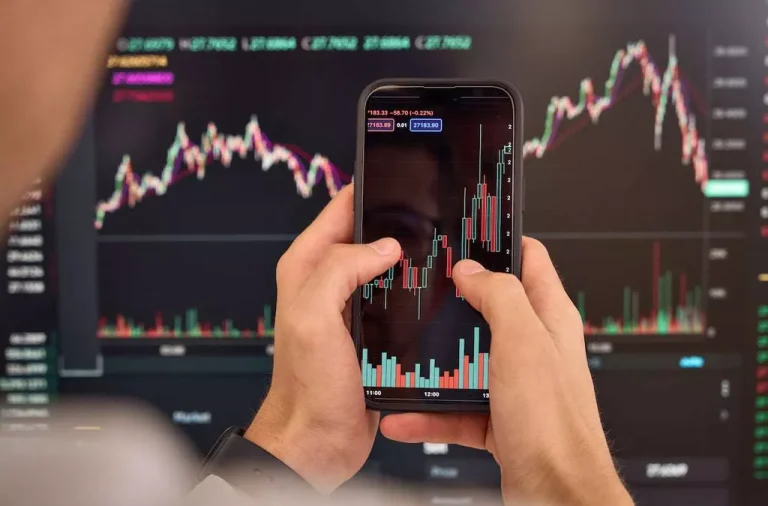Active Vs Passive Investing: The Differences The Motley Fool
Choosing between passive and energetic investing is dependent upon your financial goals, risk tolerance, and funding expertise. Energetic investing is a hands-on method where fund managers or particular person investors take an active position in selecting and managing investments. Utilizing the expertise of a fund manager comes at a cost and actively managed funds will often have higher fees than passive ones. This can minimize into your profits and cut back the growth of your money over time. While energetic investing can lead to impressive returns, it requires important time, effort, and skill.

Frequent Passive Funding Automobiles
However we all know that nobody investment technique is ideal, or proper for everybody. The efficiency of energetic and passive funding strategies can differ significantly. When evaluating passive and active investing, the cost is a big factor. Actively managed funds include larger charges due to the analysis, transactions, and expertise involved. This entails detailed analysis on individual companies – like new products they’re creating, how their enterprise fits with current tendencies within the overall financial system and their senior administration.
The objective is to outperform a specific market index by carefully timing trades and selecting property with growth potential. This requires steady evaluation and decision-making backed by deep analysis and market expertise. If you’re undecided whether or not investing is right for you, or want advice on passive or energetic decisions then we’d recommend chatting with a financial adviser – there’ll usually be a cost for advice. Equally, when issues are bad, investments in a passive fund won’t be offered or switched in reaction to any downturns, so investors will have to journey them out with Non-fungible token the market.
For example, a company may have a new drug in the pipeline that would turn out to be a market chief, which might see their share price improve fast. A fund manager would aim to buy that company’s shares earlier than they go up. They additionally take a glance at wider issues that might have an effect on investments, like political adjustments and conflicts. Managers can act to sell shares if a company isn’t performing well, to strive cut losses in the fund.
Active Vs Passive Investing: An Overview
- In 2023, passive U.S. equity funds reported internet inflows of $244 billion, while active funds noticed web outflows within the ballpark of $257 billion, according to Morningstar.
- We are an impartial, advertising-supported comparison service.
- This benefit might seem counterintuitive because the point of lively funds is to attempt to outperform the market.
- These funds are cost-competitive with ETFs, if not cheaper in quite a quantity of cases.
You Are usually much less susceptible to the ups and downs of the market when diversified. Passive investing sometimes entails index funds and ETFs that monitor benchmarks like the S&P 500, offering broad market exposure. It involves an analyst or trader figuring out an undervalued inventory, buying it and riding it to wealth. It’s true – there’s plenty of glamour to find the undervalued needles in a haystack of shares.
A buy-and-hold strategy is doubtless considered one of the most typical and well-renowned passive investing methods. Here Is a extra in-depth have a look at how passive investing and energetic investing examine. Whereas ETFs have staked out a space for being low-cost index trackers, many ETFs are actively managed and follow numerous strategies. Moreover, it isn’t simply the returns that matter, but risk-adjusted returns.
Passive investing requires less expertise and could be suitable for novices. It’s a simple method that doesn’t demand in-depth knowledge of market dynamics. Energetic investing, then again, typically calls for extra knowledge and research to pick and monitor suitable managers. You need to know the different investment kinds, consider manager monitor information, and stay knowledgeable about market developments.
The offers that seem on this site are from companies that compensate us. But this compensation does not influence the information we publish, or the critiques that you just see on this site. We don’t embrace the universe of companies or monetary presents which may be out there to you. There are also a number of strengths and weaknesses of active investing. There are a number of strengths and weaknesses of passive investing. All origination, servicing, collections, and advertising supplies are offered in English only.

As A Substitute of attempting to beat the market, passive buyers seek to match market efficiency by investing in index funds or exchange-traded funds (ETFs). The idea behind actively managed funds is that they allow strange traders to rent professional inventory pickers to manage their money. When things go nicely, actively managed funds can deliver performance that beats the market over time, even after their fees are paid. Whereas there are benefits and disadvantages to each methods, buyers are beginning to shift dollars away from energetic mutual funds to passive mutual funds and passive exchange-traded funds (ETFs). As a bunch, actively managed funds, after charges https://www.xcritical.in/ have been taken into consideration, are likely to underperform their passive friends. In both case, the funds themselves are managed by investment advisers, and the funding adviser for a particular fund can undertake an active or passive technique for that fund.
Energetic investing depends on specialists to handle issues with the purpose of supplying you with greater returns. We’ll clarify the advantages and downsides here, so you can resolve which suits you best. This combine supplies the benefits of passive investing while allowing room for strategic adjustments when opportunities come up. Passive investing is a low-cost, low-effort method what are the pros and cons of active investing that has historically delivered stable long-term returns. Nonetheless, it requires patience and a willingness to experience out price volatility without making frequent changes.
Each mutual funds and ETFs can be actively managed, however it varies by fund. Also, many non-public funds, accessible only to high-net-worth investors, corresponding to hedge funds, are actively managed. Whereas technically it is attainable to set up a passive funding technique by buying and holding particular person securities to match an index, typically this is achieved by shopping for funding funds. Sometimes, exchange-traded funds (ETFs) are passive investment autos, however not all are, so it’s necessary to rigorously think about the fund’s technique. Whether you select active vs passive investing is decided by your financial scenario, goals, and willingness to take on risk. Many traders use a hybrid approach, incorporating both lively and passive investments into their portfolios.
For occasion, sesearch from S&P Global discovered that over the 20-year period ended 2022, solely about 4.1% of professionally managed portfolios in the us constantly outperformed their benchmarks. Yes, yield farming can still be profitable in 2025—especially when in comparability with conventional financial devices. Yield farming offers high rewards, but it comes with severe risks. Unlike conventional financial devices, DeFi protocols depend on sensible contracts, volatile digital belongings, and market incentives that may change shortly.

Laisser un commentaire